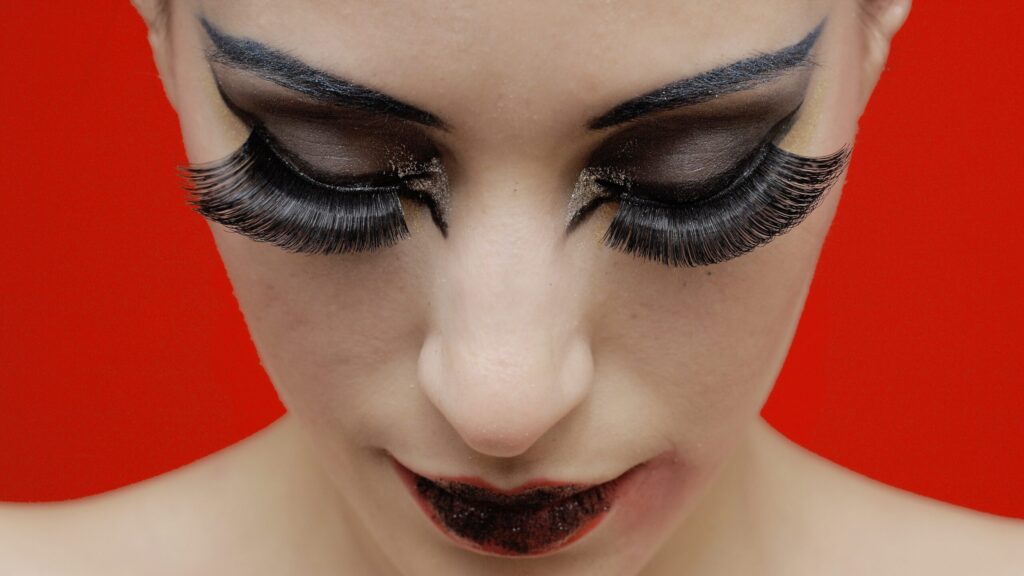If you recently had your eyeliner made permanent, you probably want to know when you may resume wearing mascara. After all, most people’s makeup routines include mascara, so it makes sense to wonder whether you can resume using it following a cosmetic treatment. In this article, we’ll look at the subject of when it’s okay to wear mascara again after applying permanent eyeliner and give you some advice on how to do so comfortably and safely.

The process of applying permanent eyeliner, sometimes referred to as micro-pigmentation or cosmetic tattooing, involves inserting a needle beneath the skin along the lash line to deposit color. While the process is quite similar to getting a tattoo, a tiny needle is used, and the color is intended to gradually fade over time. The result is a smudge-proof, long-lasting eyeliner that improves the appearance of the eyes and eliminates the need for daily makeup application.
Give your skin time to recover correctly after permanent eyeliner application before using any makeup, including mascara. Your eyes may be more sensitive and vulnerable to irritation or infection at this time as the healing process might take several weeks. The delicate skin surrounding the eyes can become infected and harmed if mascara is applied too soon after the treatment.
Read more about it on byrdie.
How Long Should You Wait Before Applying for Mascara?
Generally speaking, it’s advised to hold off applying mascara after permanent eyeliner for at least two to three weeks. This gives the skin adequate time to heal and for any swelling or redness to go down. It’s crucial to keep in mind that everyone’s recovery period will be different, so it’s ideal to adhere to the detailed aftercare guidelines the cosmetic specialist has given you.
When you are finally able to reapply mascara, it is crucial that you pick the proper formula and gently apply it. Avoid waterproof versions, which can be challenging to remove and may irritate or harm the skin, and look for mild, non-irritating mascara. Use a soft touch when applying mascara rather than rubbing or pulling on the eyelids or lashes. And never forget to take off your mascara before going to bed, using a soft makeup remover and a cotton pad to prevent rubbing the sensitive skin around your eyes.

Tips for Caring for Your Permanent Eyeliner:
It’s critical to look after the treated area during the healing process if you want the greatest results from your permanent eyeliner.
The following advice can help you maintain your permanent eyeliner:
- Avoid rubbing or scratching the region around your eyes: Doing so might irritate the skin and perhaps harm the tattooed area.
- Keep the area dry and spotless: For the first several days following the treatment, avoid getting the region wet. Also, wait until the area has fully healed before applying cosmetics or other products to it.
- Apply a healing lotion: As directed by your technician, apply a healing lotion or ointment to the area that has been treated. This can aid in the healing process and lessen pain.
- Avoid exposing the treated area to sunlight or tanning beds: UV exposure can cause the pigment to fade more quickly.
- Follow the aftercare instructions provided by your technician: They will be able to provide specific advice on caring for your permanent eyeliner based on your individual needs.

In the end...
The usual rule of thumb is to wait at least two to three weeks to let your skin heal properly if you’re wondering how long it is after permanent eyeliner you may apply mascara. It’s crucial to refrain from using any makeup products, especially mascara, that can irritate or harm the skin during this period. Once you’ve been given the all-clear to resume using mascara, pick a mild, non-irritating formula, apply it meticulously, and always remember to take off your makeup before night. After using permanent eyeliner, you can easily and securely add mascara back into your makeup routine by following these guidelines.
Read out the latest blog on how to reduce swelling after permanent eyeliner.
Also, check out why concealer causes darkening of the face.

